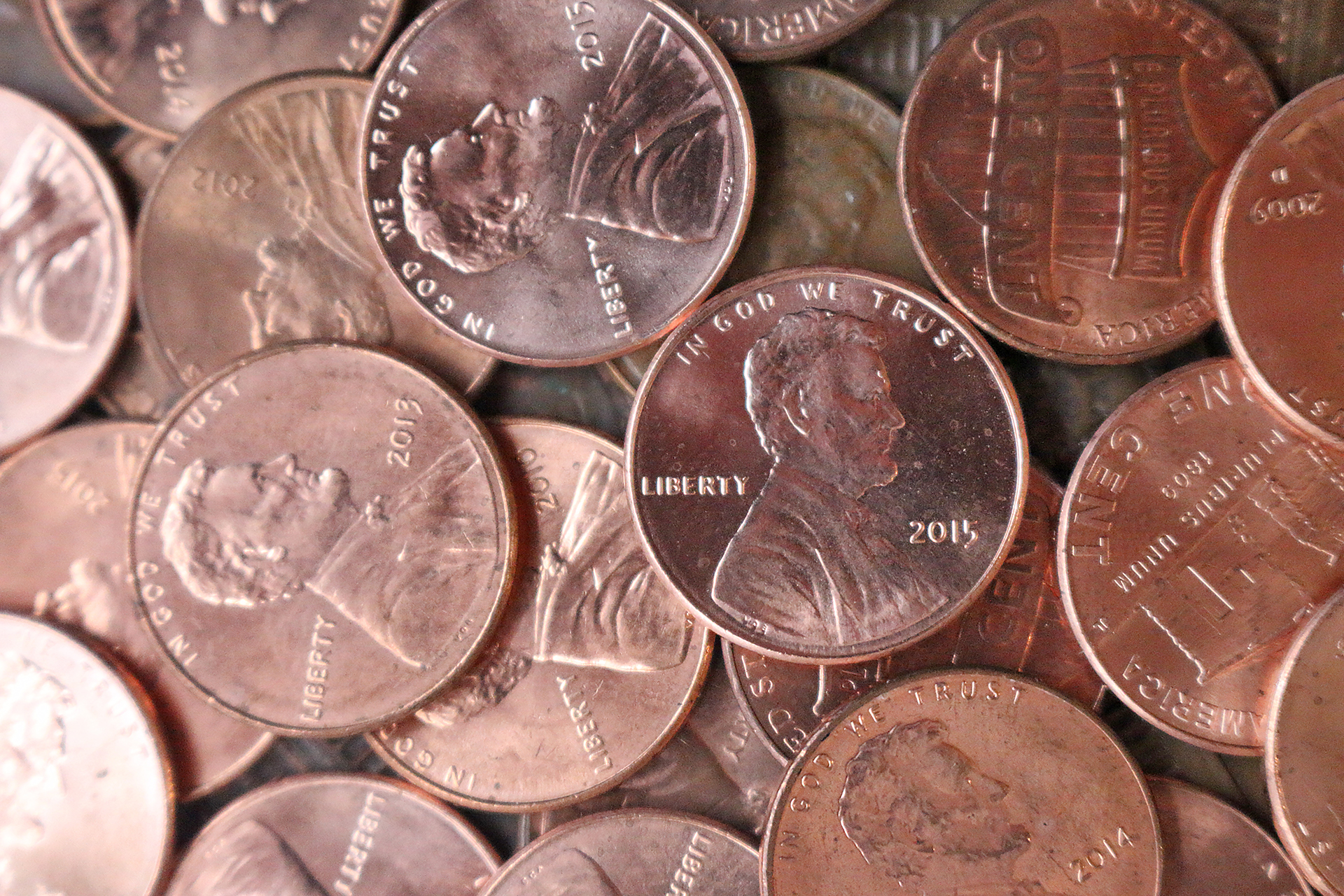After many years of possible elimination of the endangered lowly copper-colored coin, the production of new pennies to end in the United States might actually happen this time around, as the current president of the United States has ordered a halt to the minting of new pennies.
Production of New Pennies to End in the United States?
Donald Trump posted the following message on his Truth Social account on Sunday, February 9, 2025:
For far too long the United States has minted pennies which literally cost us more than 2 cents. This is so wasteful! I have instructed my Secretary of the US Treasury to stop producing new pennies. Let’s rip the waste out of our great nations budget, even if it’s a penny at a time.
After ceasing production of its one-cent coin on January 31, 2020, the Central Bank of The Bahamas phased it out from circulation on Wednesday, December 30, 2020 as a result of the denomination reportedly has outlived its usefulness and that its purchasing power had diminish by approximately 90 percent since first being issued in 1966. As with the current United States penny, the cost to produce and distribute the one-cent coin in the Bahamas was more than its face value.
Fewer countries still issue pennies, one-cent coins, or their economic equivalents — the United States is still one of them — and nickels and other economic equivalents of the five-cent coins are also in the cross hairs of elimination. In addition to the Bahamas, at least 75 other countries have halted production of their lowest value coin and removed it from circulation over the years — including Australia, Brazil, Canada, Denmark, Ireland, Japan, Norway, Sweden, South Africa, and Trinidad and Tobago. Trying to collect one of the discontinued coins in some of these countries have become virtually impossible.
The Rounding System Proposed For the Bahamas
With the elimination of the penny in Bahamas, if you use credit cards, debit cards, checks and other means of paying without cash, the total bill of sale will remain exactly the same, as the absence of the penny will not cause the total bill of sale to be rounded up or rounded down.
When the total bill is being paid in cash and the number of cents to be paid does not end in zero or five — thus requiring either the customer to use 1-cent coins in payment or the retailer to use such coins in giving change — the amount of change to be paid will be rounded to the nearest 5 or 10 cents:
- 1 and 2 would be rounded down to zero — for example, $4.21 becomes $4.20
- 3 and 4 would be rounded up to 5 — for example, $7.23 becomes $7.25
- 6 and 7 would be rounded down to 5 — for example, $15.67 becomes $15.65
- 8 and 9 would be rounded up to 10 — for example, $27.89 becomes $27.90
Canada Eliminated Its Penny
As I first reported in this article, Friday, May 4, 2012 was the last day on which the Canadian penny was minted; and Monday, February 4, 2013 was the last day it was distributed — although with greater than 30 billion of them currently in use, they are expected to be around in circulation for a little while longer.
The Canadian government expected to save $11 million per year by no longer minting the penny, which cost 1.6 cents to produce — and which made a lot of cents to the Canadian government.
Businesses had reportedly been asked to return pennies to financial institutions so that the coins can be melted down and their metal content recycled.
Canada is apparently far from the first country to abolish the penny. Sweden, New Zealand, Finland, Australia, the Netherlands and Norway supposedly eliminated pennies with no public outcry and no noticeable effect on inflation.
The Rounding System in Canada
With the elimination of the penny in Canada, if you use credit cards, debit cards, checks and other means of paying without cash, the total bill of sale will remain exactly the same, as the absence of the penny will not cause the total bill of sale to be rounded up or rounded down.
If you happen to be purchasing an item using cash to pay for goods and services in Canada and the total bill of sale — including any taxes — ends in a number other than one or five, what you will actually pay will be either rounded up or rounded down as follows in the list below:
- If the total bill of sale is $1.00, you pay $1.00 — nothing changes
- If the total bill of sale is $1.01, you pay $1.00 — you save one extra cent
- If the total bill of sale is $1.02, you pay $1.00 — you save two extra cents
- If the total bill of sale is $1.03, you pay $1.05 — you pay two extra cents
- If the total bill of sale is $1.04, you pay $1.05 — you pay one extra cent
- If the total bill of sale is $1.05, you pay $1.05 — nothing changes
- If the total bill of sale is $1.06, you pay $1.05 — you save one extra cent
- If the total bill of sale is $1.07, you pay $1.05 — you save two extra cents
- If the total bill of sale is $1.08, you pay $1.10 — you pay two extra cents
- If the total bill of sale is $1.09, you pay $1.10 — you pay one extra cent
- If the total bill of sale is $1.10, you pay $1.10 — nothing changes
Past Attempts to Eliminate the Penny in the United States
As I first reported in this article on Friday, January 8, 2016, Philip Diehl wants to eliminate the penny — and he attempted to do just that during his time when he was the director of the United States Mint from June of 1994 through March of 2000 — and he is obviously not the only person who believes that the penny is obsolete.
Jim Kolbe — a former Republican member of the United States House of Representatives who represented the fifth congressional district in Arizona — also unsuccessfully tried to abolish the penny by congressional action in 2001 and 2006.
The penny cost 1.8 cents to produce in 2016 — which at that time was almost twice as much as it is actually worth — and the United States Mint loses tens of millions of dollars each year as a result simply from producing pennies. In 2024, minting a penny can cost as much as 3.69 cents. Taxpayers in the United States paid greater than $179 million to mint pennies in fiscal year 2023 alone.
According to its annual report for 2024, the United States Mint — which is a bureau of the Department of the Treasury of the United States — lost $85.3 million on almost 3.2 billion pennies that it produced in fiscal year 2024. The unit cost for pennies has been above face value for 19 consecutive fiscal years.
Even worse is that the minting of the nickel may be targeted next, as each five cent coin costs almost 14 cents to produce.
Those who are opposed claim that the proposed elimination the penny will cause prices to be distorted; and perhaps even create mild inflation.
Interestingly, removing the penny from production and circulation will not be the first time that the United States removed its lowest value coin from production and circulation: the half cent was minted between 1793 and 1857. Even though the coin is still technically legal tender in the United States, no one uses it — and no one seems to miss it.
Does it make cents for the United States to become penniless, so to speak?
Would the Penny Be Worth More Once Minting Has Stopped?
If you believe that the Canadian penny will be worth more due to its production being ceased, I would think again: the 1943 “white” penny of the United States was made of steel and coated in zinc because there was a shortage of copper, which was needed for use during World War II. Ironically — or, should I say, steel-ically — the pennies from 1943 which were made from copper are substantially more valuable because there are significantly fewer of them than the “white” penny, which can be worth as little as 50 cents.
Do the math: 1943 was 82 years ago — and there are fewer “white” pennies in existence than there are Canadian pennies. I am not a professional numismatist; but assuming that the Canadian penny increases in value at the same rate as the 1943 “white” penny in the United States, that is an increase in value of not even one penny per year for each penny. There is no basis for my comparison, to be sure; all I am saying is do not hold your breath hoping that the Canadian penny will appreciate in value significantly enough in your lifetime to be worth holding on to it.
Final Boarding Call
I rarely use money anymore. Credit cards are what I use mostly these days. I have a record of spending which I can track; and I do not have to worry about carrying all sorts of coins and paper notes in my pocket. If production of the penny was eliminated, I probably would not be affected.
Whether Donald Trump has the authority to cease the minting of pennies is unclear at the time this article was written.
Interestingly, rounding already occurs in the United States on a voluntary basis. I have seen both customers letting merchants keep the change if it is a couple of cents; while retailers occasionally will give the customer a one-penny or two-penny break while saying “Don’t worry about it” — and that was about to happen to me last week at a supermarket when I found a penny in my pocket. I am not certain, however, that the United States is ready to officially eliminate the penny just yet, although I have heard discussion about it for years now…
…but if the penny is indeed eliminated, does that mean that a hotel room cannot be sold for a night for one penny anymore? What about a frequent flier loyalty program mile being worth one penny — would that cease to exist as well?
Of course, I ask those questions in jest — but I will coin a phrase in the form of a question while I can still ask it: how about a penny for your thoughts?
Photograph ©2016 by Brian Cohen.

